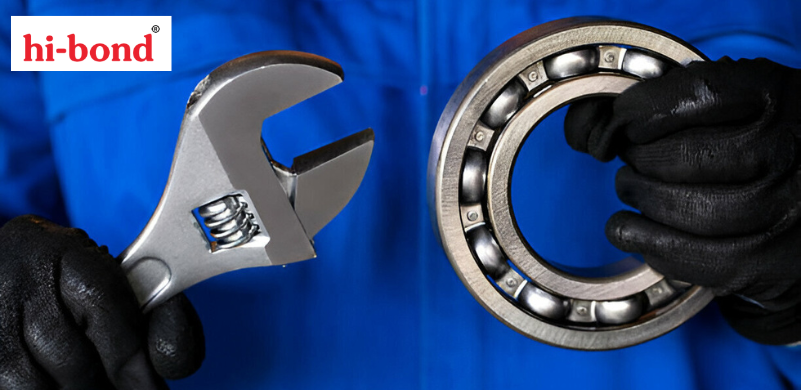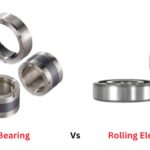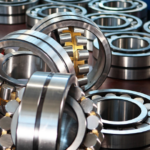Industrial bearings are essential for keeping machinery and equipment running efficiently. Over time, they may wear out or fail due to regular use, making proper removal and replacement critical to maintaining performance and preventing further damage. Installing and removing bearings correctly isn’t just routine maintenance—it directly impacts the longevity and reliability of your machinery.
Using improper methods like hammers or torches can lead to premature failure and safety risks. Partnering with a reliable bearing manufacturer ensures you get high-quality components for your equipment and proper guidance for removal and replacement.
In this guide, we’ll provide step-by-step instructions for safely removing and replacing industrial bearings, whether a radial ball bearing or a roller bearing, thereby keeping your operations running smoothly!
Why Proper Bearing Maintenance Matters
Industrial bearings are essential for smooth machinery movement, reducing friction, and enhancing efficiency. Over time, wear and tear can cause them to fail, leading to:
- Premature equipment breakdowns
- Damage to surrounding components
- Potential safety hazards
Scheduling regular maintenance that includes inspections, cleanings, and lubrication can significantly extend a bearing’s lifespan. Insufficient lubrication is the leading cause of premature failure, making it a crucial part of any maintenance program.
Steps for Safely Removing Bearings
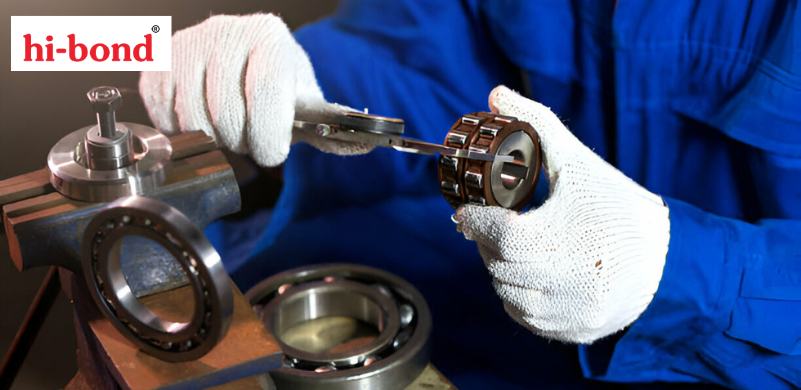
Gather Tools and Prioritize Safety
Before removing bearings, gather all necessary tools and safety gear. Proper preparation reduces accidents and ensures efficient removal. Follow these safety steps:
- Wear Personal Protective Equipment (PPE): Use safety gloves, goggles, and steel-toe boots.
- Disconnect Power Sources: Disconnect and isolate power sources to prevent accidental startups.
- Prepare the Workspace: Ensure a clean, well-lit, and organized area.
Essential Tools for Bearing Removal:
- Bearing puller or extractor
- Bearing press, tubular drift, or installation tool
- Hammer or mallet
- Allen wrenches or socket set
- Cleaning solvent and lubricant
- Hydraulic-assisted tools such as Induction heaters for thermal installation suitable for heavy-duty bearings
Removing the Old Bearing
- Inspect the Machinery: Before starting, check bearings and nearby components for wear or damage.
- Clean the Area: Remove debris to prevent contamination during removal.
- Loosen Fasteners: Remove the locking washer and nut by bending the locking washer tab and using appropriate tools such as a spanner wrench.
- Lubricate the Bearing: Apply penetrating oil to ease extraction.
- Use Proper Tools: Use a puller or extractor and apply even force to remove the bearing. Avoid cutting it off with a grinder, which may damage the shaft or housing.
- Inspect Components: After removal, check the shaft and housing for wear or damage and clean thoroughly.
Common Mistakes and Methods to Avoid During Bearing Removal
To ensure a smooth bearing removal process, avoid these common mistakes:
- Using Inappropriate Tools: Using mismatched tools can damage bearings or machinery. Always choose tools suited to the bearing’s size and type, ensuring they align with tolerances to prevent burrs that might harm new bearings during installation.
- Neglecting Safety: Skipping protective gear can lead to injuries. Always follow safety protocols to minimize risks.
- Overlooking Post-removal Inspections: Failing to inspect removed bearings can mean missing signs of underlying issues in the machinery. Always examine bearings for wear patterns or damage.
Avoid these methods unless absolutely necessary.
- Brute Force Methods: Using hammers or gouges to remove bearings forcibly should be a last resort. This approach risks damaging the outer race, housing, or nearby components, leading to costly repairs and increasing the chances of injuries from tool mishandling.
- Hot Oil or Steam Removal: Heating bearings with hot oil or steam to expand them can aid removal but pose risks. High temperatures may cause burns if safety measures are ignored and can stress nearby components, potentially increasing maintenance or replacement costs.
The bearing puller method is a reliable choice for removing various sizes and types of bearings, such as ball and roller bearings. It ensures even force distribution, reducing the risk of damage. Similarly, hydraulic methods are ideal for extracting large, heavy-duty bearings that cannot be handled with standard pullers.
Guide to Proper Bearing Installation
Installing a bearing correctly ensures the longevity and efficiency of your machinery. Here’s a step-by-step guide to simplify the process:
Preparation:
- Clean the Area: Remove debris, gouges, corrosion, old grease, and moisture from the shaft and housing using industrial Scotch-Brite pads and light machine oil. Avoid using emery paper to prevent contamination.
- Inspect Components: Check for damage, wear, or irregularities on bearings, shafts, and housings. Use precise tools like a micrometer or caliper to confirm dimensions and tolerances.
- Choose the Right Bearing: Always use an exact replacement. Identify the bearing through part numbers or precise measurements using tools like vernier micrometers or slide calipers with a precision of 0.0001 inches.
- Handle Bearings Carefully: Keep bearings sealed until installation. If cleaning is required, use a suitable solution and apply a thin layer of recommended lubricant to reduce friction and enhance performance.
Installation Process:
Choose the Right Tools: Use tools like bearing drivers, arbor presses, or hydraulic presses for even force application. Ensure tools are correctly aligned to avoid damaging the bearing.
- Arbor Press: A manually operated tool suitable for smaller bearings, providing precise and controlled pressure. Ensure the shaft and bearing are aligned, apply pressure slowly, and use accessories like a slotted plate for support.
- Hydraulic Press: Designed for larger bearings or tight press fits, hydraulic presses apply significant force. Ensure proper alignment, apply slow, even pressure, and prioritize safety with appropriate training and PPE.
Choose the Right Method: Match the installation method to the bearing type and size. For smaller bearings, use a press or push-fit technique. Consider hydraulic methods or induction heaters for a precise and safe fit for larger bearings.
- Press Fit: Press-fitting is a precise technique ensuring a snug fit for small and large bearings. A tight press fit is essential for rotating inner rings, such as those in motor shafts. Use a tubular drift or combine thermal and press-fit methods for challenging installations.
- Shrink fitting: It is a favored method for mounting large bearings without excessive force, using heat to expand the bearing before installation.
- Induction Heater: For thermal installation, heat bearings use induction heaters for even, controlled expansion without contamination. Avoid methods like ovens or oil baths that may introduce contaminants. Maintaining proper temperature control (e.g., 230°F) protects the bearing’s properties. For extreme fits, cooling the shaft with liquid nitrogen or overnight exposure in cold climates can help, but guard against moisture to prevent corrosion.
Avoid Cocking: Ensure bearings are aligned and seated evenly during installation. Improper alignment can damage raceways and shorten bearing life.
Testing and Maintenance
Test Machinery: Run equipment at low speed after installation to ensure proper seating and alignment.
Ongoing Inspection: Regularly check for wear, lubrication levels, and surface condition to maintain performance.
Extend Your Machinery Lifespan With Quality Bearings from A Trusted Bearing Manufacturer
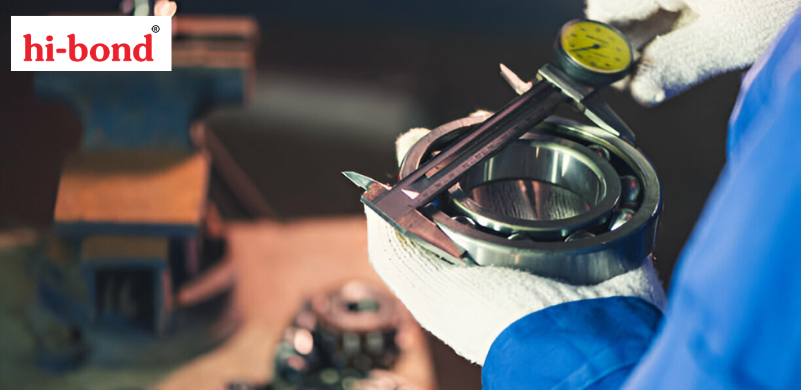
Careful handling during the removal and replacement of industrial bearings ensures the safety and efficiency of your machinery. Hi-bond Bearings Pvt. Ltd, a trusted bearing manufacturing company, deals with quality tools and advises using proper techniques to avoid costly mistakes and extend the lifespan of your equipment.
Prioritize regular maintenance to keep operations running smoothly.

